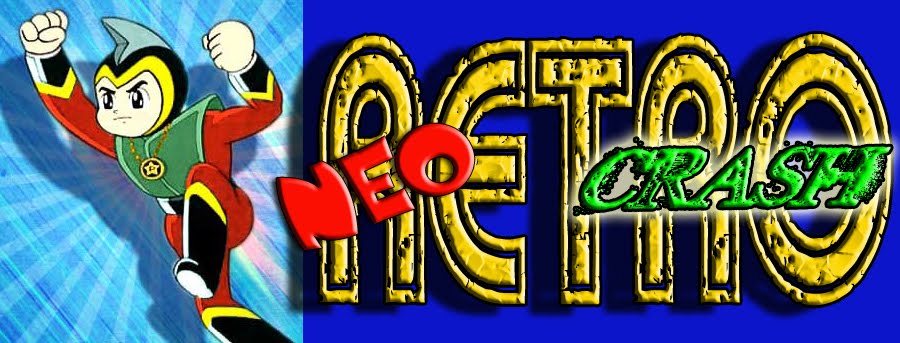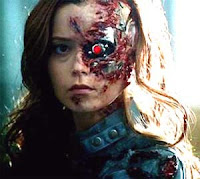It took a long time for Robots to return to the place where Robby put them..Instead of being a boon to humanity, Robots had been turned into things to be feared. It didn't switch back until Star Wars and then they were reduced to cute sidekicks.
B-9 (Robot) Lost in Space:
Although a machine endowed with superhuman strength and futuristic weaponry, he often displayed human characteristics, such as laughter, sadness, and mockery, as well as singing and playing the guitar.
Norman:was the "leader" of a group of androids who inhabited the planetMudd
In 2268, Harry Mudd, who became stranded on the planet which he named after himself, sent Norman to capture a Federation starship so that he could leave the planet in exchange for the vessel's crew.
The M-5 computer or the M-5 multitronic unit was created by DoctorRichard Daystrom. It utilized very sophisticated technology, probably similar to the Human neural network, and much more sophisticated than the duotronic computer commonly in use at the time. According to Dr. Daystrom, the computer could think and reason like a Human. He had used his own memory engrams as a model for the computer. Models M-1 through M-4 were not entirely successful.In 2268, Harry Mudd, who became stranded on the planet which he named after himself, sent Norman to capture a Federation starship so that he could leave the planet in exchange for the vessel's crew.
Norman left the planet and, posing as a Starfleet sciences division lieutenant, signed aboard the USS Enterprise. After successfully taking over the ship, he redirected it to Mudd to carry out "Lord" Mudd's plan.
M-5 was installed on board the USS Enterprise in 2268 as a test of its capabilities. It was due to command and control the ship during several battle simulations, where up to four other starships would attack the Enterprise. Manned with only a skeleton crew of twenty, the ship was completely run by the computer.
 HAL 9000 is a fictional character in Arthur C. Clarke's Space Odyssey series. First appearing in 2001: A Space Odyssey, HAL (Heuristicallyprogrammed ALgorithmic computer) is asentient computer (or artificial general intelligence) that controls the systems of theDiscovery One spacecraft and interacts with the ship's astronaut crew. HAL's exterior physical form is not depicted, though it is visually represented as a red television camera eye located on equipment panels throughout the ship, and its interior in the scene where his advanced memory modules are disconnected. HAL 9000 is voiced by Douglas Rain in the two film adaptations of the Space Odyssey series and a short film voiced by Andrew Stanton. HAL speaks in a soft, calm voice and a conversational manner, in contrast to the crewmen, David Bowman and Frank Poole, who speak tersely and with little inflection.
HAL 9000 is a fictional character in Arthur C. Clarke's Space Odyssey series. First appearing in 2001: A Space Odyssey, HAL (Heuristicallyprogrammed ALgorithmic computer) is asentient computer (or artificial general intelligence) that controls the systems of theDiscovery One spacecraft and interacts with the ship's astronaut crew. HAL's exterior physical form is not depicted, though it is visually represented as a red television camera eye located on equipment panels throughout the ship, and its interior in the scene where his advanced memory modules are disconnected. HAL 9000 is voiced by Douglas Rain in the two film adaptations of the Space Odyssey series and a short film voiced by Andrew Stanton. HAL speaks in a soft, calm voice and a conversational manner, in contrast to the crewmen, David Bowman and Frank Poole, who speak tersely and with little inflection. Westworld is a 1973 science fiction western-thriller film written and directed by novelistMichael Crichton and produced by Paul Lazarus III about amusement park robots that malfunction and begin killing visitors. It stars Yul Brynner as an android in a futuristic Western-themed amusement park, and Richard Benjamin and James Brolin as guests of the park.
Westworld is a 1973 science fiction western-thriller film written and directed by novelistMichael Crichton and produced by Paul Lazarus III about amusement park robots that malfunction and begin killing visitors. It stars Yul Brynner as an android in a futuristic Western-themed amusement park, and Richard Benjamin and James Brolin as guests of the park.DARK STAR (1974)
In John Carpenter's Dark Star (1974) an asteroid storm and an escaped alien (in the form of a large beach ball with webbed claws) initiate a series of malfunctions on the already dilapidated starship. The storm and the alien both foul up a "communications laser" that sends bombing signals and orders to the ship's 20 "thermostellar nuclear" bombs, each designed to destroy an entire planet. Mother, the ship's main computer, is able to convince bomb #20 twice to return to the bomb bay after receiving faulty orders, but the third time, the bomb stubbornly refuses to disarm itself and return to the bay, anxious to fulfill its single purpose in life, its destiny: to explode.
Desperate, Doolittle, the ship's commanding officer, seeks advice from Commander Powell, who is in cryogenic suspension after suffering a freak accident caused by a malfunctioning seat-belt. Powell tells Doolittle to teach Bomb #20 "a little phenomenology." Doolittle goes EVA and has the following conversation with Bomb #20:
The Comedies of the era-Some films tried to make light of the situation and still have a point. Not always an easy thing to do, and like the genre itself, it had varying degrees of success.
Dr. Goldfoot and the Girl Bombs
Nefarious mad scientist Dr. Goldfoot once again plots to take over the world by creating female robot bombs specifically designed to blow up high-ranking generals of NATO countries. Goldfoot hopes that by doing this he will start a war between Russia and America. It's up to disgraced government agent Bill Dexter to stop Goldfoot.
- Written by Woodyanders
Sleeper-A nerdish store owner is revived out of cryostasis into a future world to fight an oppressive government.
The Stepford Wives (1975)
Joanna Eberhart has come to the quaint little town of Stepford, Connecticut with her family, but soon discovers there lies a sinister truth in the all too perfect behavior of the female residents.
And there were the Robots that had a conscience

Wizards-Necron 99, a robot sent by Blackwolf to kill believers in magic. Avatar confronts the robot and battles it using brain reading. Necron 99 loses the desire for war and changes his name to Peace
Some were just evil through and through
The Daleks were created by writer Terry Nation and designed by BBC designer Raymond Cusick.[1] They were introduced in December 1963 in the second Doctor Who serial, colloquially known as The Daleks.[2] They became an immediate and huge hit with viewers, featuring in many subsequent serials and two 1960s motion pictures. They have become as synonymous with Doctor Who as the Doctor himself, and their behaviour and catchphrases are now part of British popular culture. "Hiding behind the sofa whenever the Daleks appear" has been cited as an element of British cultural identity;[3] and a 2008 survey indicated that nine out of ten British children were able to identify a Dalek correctly.[4] In 1999 a Dalek photographed by Lord Snowdon appeared on a postage stamp celebrating British popular culture.[5] In 2010, readers of science-fiction magazine SFX voted the Dalek as the all-time greatest monster, beating competition including Japanese movie monster Godzilla and J. R. R. Tolkien's Gollum, of The Lord of the Rings.[6]
And finally, Robots getr back to helping out people
C-3PO is a protocol droid designed to serve human beings, and boasts that he is "fluent in over six million forms of communication". He is generally seen with his long-time counterpart, R2-D2. Threepio's main function is to assistetiquette, customs, and translation, so that meetings of different cultures run smoothly. Threepio and R2-D2 played vital and pivotal roles in the Galaxy's history. While protocol/interpreter droids range in color, C-3PO appears primarily in gold finish with silver from the right knee down.
R2-D2 or Artoo-Detoo (called "R2" for short) is a fictional character in the Star Wars universecreated by George Lucas. An astromech droid(referred to in the novel as a 'thermocapsulary dehousing assister'), R2-D2 is a major character in all Star Wars films, and is also the first character to appear in the franchise.



























